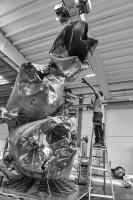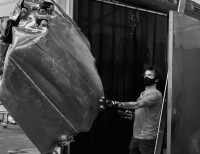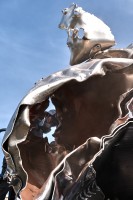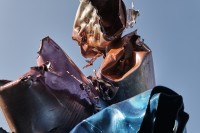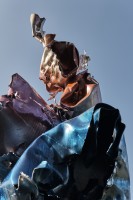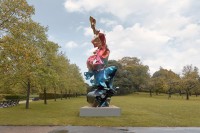Arne Quinze builds Lupine Tower for Frieze Sculpture, Regent's Park
Frieze — London
This year, Frieze Sculpture returns to The Regent’s Park from 5 – 18 October, featuring 12 ambitious works by leading international artists throughout the park’s English Gardens.
Adapted in response to the COVID-19 pandemic, Frieze Sculpture 2020 will facilitate ambitious sculptural projects, despite the myriad challenges facing artists working in the medium in this moment. The outdoor exhibition will feature new works from Patrick Goddard, Kalliopi Lemos and Arne Quinze, alongside recent work by Sarah Lucas, Fabio Lattanzi Antinori, Richard Long, Gavin Turk, to name just a few. The works were selected by curator Clare Lilley (Director of Programme, Yorkshire Sculpture Park), who has been closely following Quinze’s artistic path for many years now.
“Rarely have our public spaces been quite so important for our mental and physical well-being, and this exhibition shines a light on sculpture in the open air, creating a place of inspiration and enjoyment" – Clare Lilley, curator.
Strolling through the park, visitors to this year’s Frieze Sculpture will discover Quinze’s The Lupine Tower, an artwork that will invite them to reflect on the wonderful mechanisms of nature and its transience. Here, Arne Quinze’s work seems to have gushed out of the earth in a powerful message from an artist commanding attention for the beauty of nature. This piece symbolizes the first leap by which unbridled nature reclaims the city.
The ecosystem that Arne Quinze set up around his home a few years ago has become his laboratory for his paintings and sculptures. The experimental space is characterized by a huge variety of plant species and a wide range of colours. The artist and gardener effortlessly disappears and escapes in this secret garden. There, he finds shelter from the roaring cacophony of everyday traffic and today’s grey and monotonous urban existence. By designing and growing this quintessentially balanced and natural, Quinze expresses his aversion for greyness and monoculture as he strives to inject fragments of his laboratory into our cities, where his sculptures will hopefully serve as catalysts for diversity.
Arne Quinze’s afflatus is not only reduced to the sporadic spurts and bursts of the explosion of nature’s fresh greenery in spring. The awareness that plants wither as winter approaches before eventually – partially – dying constantly hovers over the garden. The decaying phase provides a sense of slight nostalgia to days gone by (or is it an optimistic prospect of the future?) to the days when exploding colours still reigned over the garden. Life and decay – the two sides of the coin of nature – act as a bottomless pit of inspiration for the work of Quinze who recently created pieces focussed on transient matter as a breeding ground for new life. In Japanese, the acceptance of this transience is known as "Mono No Aware" and is crucial in Arne Quinze's recent research to nature. Although this artwork, which was specially created for Frieze Sculpture, might seem like a melancholic snapshot at first sight, it is everything but. With this sculpture, Arne Quinze celebrates life and nature by embracing the beauty of decay.
“This Lupine Tower, created for Frieze Sculpture 2020, is a direct result of the research I did on Mono No Aware over these past months and years. This artwork embodies the power of nature right after its prime highlight. The late peak of summer, when the energy of vigorous growth comes to a climax before relapsing itself towards transience." — Arne Quinze
